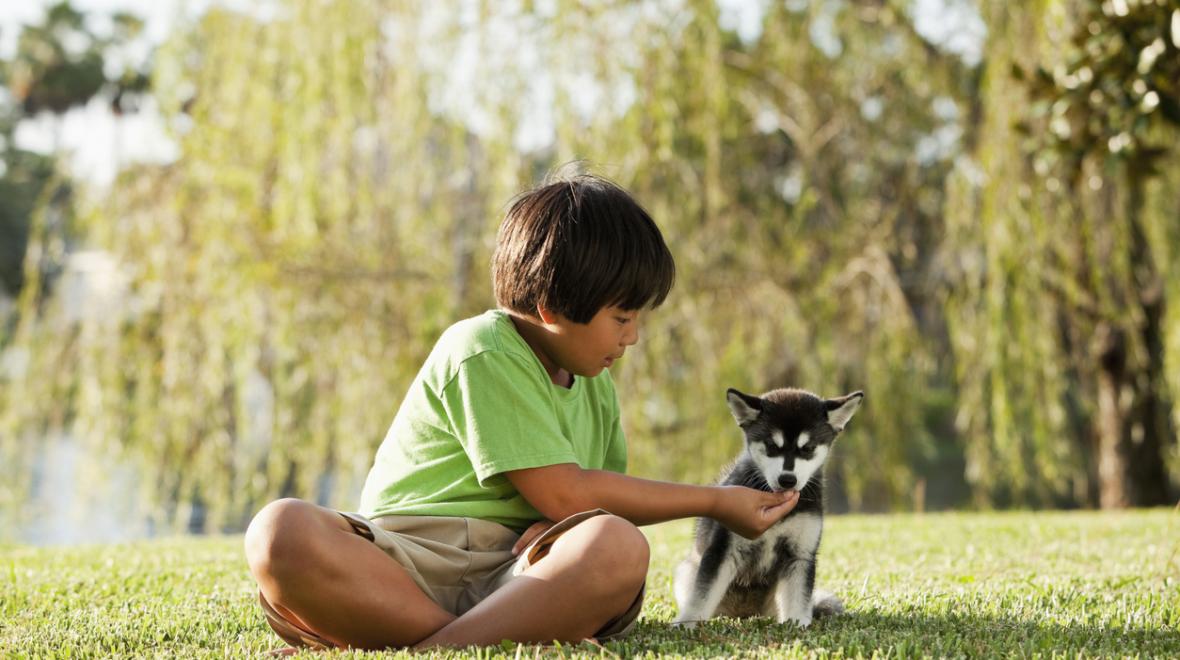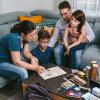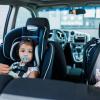
Here’s a warm fuzzy for your week: Fewer pets are winding up in shelters, and pet adoptions are up by nearly half a million a year.
That’s good news for pups and their humans. Americans adopt an estimated 1.6 million dogs annually, and the kids they often go home with love them — a lot. Research shows that children actually prefer their pets to their siblings. In a study published in the "Journal of Applied Developmental Psychology," dogs scored highest in relationship satisfaction compared to other pets, with girls feeling closer to their pet pals than boys did.
That’s nice and all, but who’s going to take care of that energetic ball of fur? And if you do decide to get a dog, what’s a busy parent to do about biting, jumping, growling and other bad behavior? Licensed dog trainer Wynona Karbo of Seattle's Ahimsa Dog Training offers a few puppy pointers to help get the dog-kid bond off to the best start. Sit, stay and read on.
How should families prep before a puppy comes home?
Before the puppy arrives, have children get into the habit of putting away their things in the areas that the puppy will have access to. Baby gates can help keep puppies out of areas where they might not be safe or supervised. Have kids practice the habit of closing the baby gates.
Children are great at picking out puppy toys, so take them with you to the pet store before the puppy comes home. You can also begin visiting puppy training classes so you can start to plan for training before the puppy arrives.
Can kids help feed a puppy, or is that a mess waiting to happen?
Possibly. Puppies pay attention to the people who feed them, so it’s a good idea to involve kids if possible. When kids feed the puppy, keep the puppy behind a baby gate while the food is dispensed so the puppy won’t jump on the child during feeding and create negative habits.
I recommend feeding puppies out of food puzzles, which help boost brain development and burn that abundant puppy energy.
What if the puppy nips when playing excitedly with my kids?
Children need to be supervised when playing with puppies. Puppies love to play, but they often bite or nip during playtime. When children respond to puppy bites and nips by yelling and jumping, the puppy misinterprets this as a signal to play even harder.
When a puppy bites during play, have children practice “being a tree” (get still, stop playing). Have plenty of appropriate toys on hand to redirect the puppy. Rotating toys with different textures helps maintain the puppy’s interest, so that the newest, most fun thing in the room to chew on is not you or your child.
When should we start training?
Puppies usually come home between 8 and 10 weeks old, and can start classes 10 days after their first set of shots. Early training is important because puppies need to learn appropriate social skills during their critical developmental period from 2 to 5 months old.
You can teach your puppy basic behaviors at home, but early, safe exposure to other people and puppies is essential for a puppy’s emotional development. This affects their ability to handle socializing with people and other dogs later on in life.
Children age 7 and older can reinforce training cues that the parents have already taught like sit, down, and come, or have fun teaching new behaviors.
What happens if our puppy growls around the kids?
First, you don’t want to punish a puppy for growling! You want the puppy to tell you that he is uncomfortable so you can work on the underlying issue. Puppies punished for growling may not offer any warning when they’re uncomfortable — they’ll just bite.
And you’re right to be concerned. “Resource guarding” is one of the most concerning behaviors we see in a family with small children. When a young child tries to take an item from a puppy (often something of theirs that the puppy has “stolen”), the puppy will display signs that they need space: stiffening, head turning and “whale eyes” (i.e., the whites of the eye showing from the side). Small children may miss these signals, which can lead to the puppy biting.
If the puppy is displaying any of these behaviors, hire a trainer with experience with resource guarding. Families can help prevent this behavior from developing by teaching “give,” “drop it” and “leave it,” and making sure that anyone in the family who will take items from the dog has participated in the training.
Puppies get tired and grumpy, just like children. Establish a place (like a crate, pen or bed) that the puppy can retreat to for some peace and quiet. It's also important to make sure the puppy takes breaks because life in a new family can be very exciting. You can further encourage the puppy to take a break by giving a treat or a chew to enjoy in this resting space. Teach the children (and their friends) to leave the puppy alone in this area so the puppy can truly calm down, relax and rest.
Editor’s note: This article was originally published in September 2017, and updated in May 2019.











